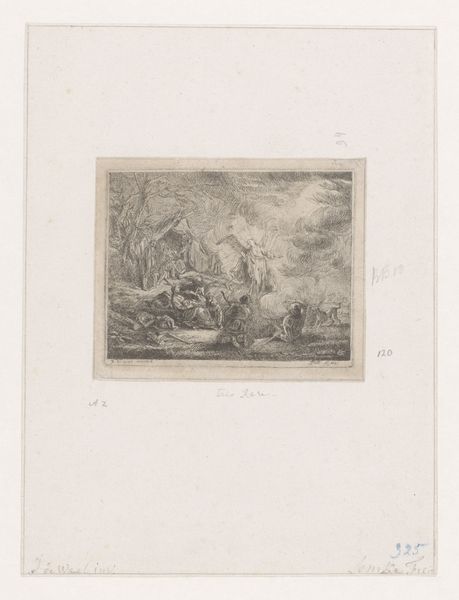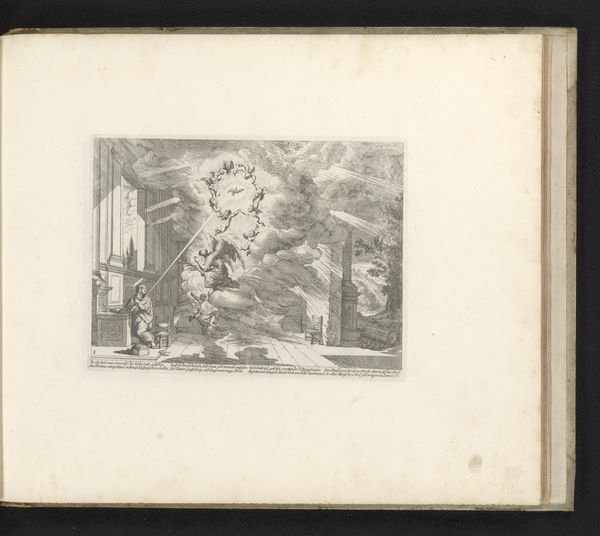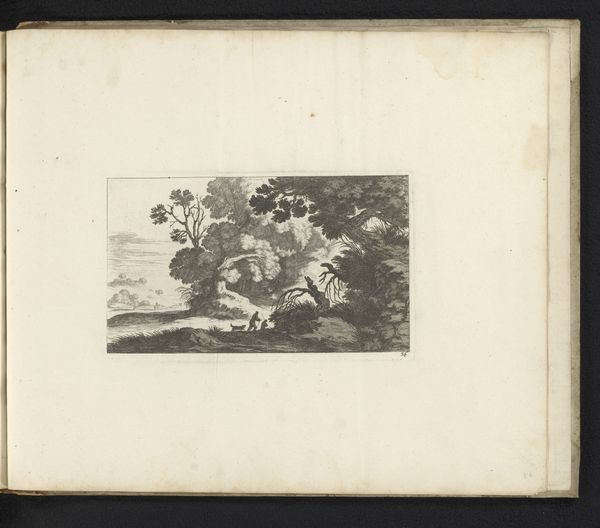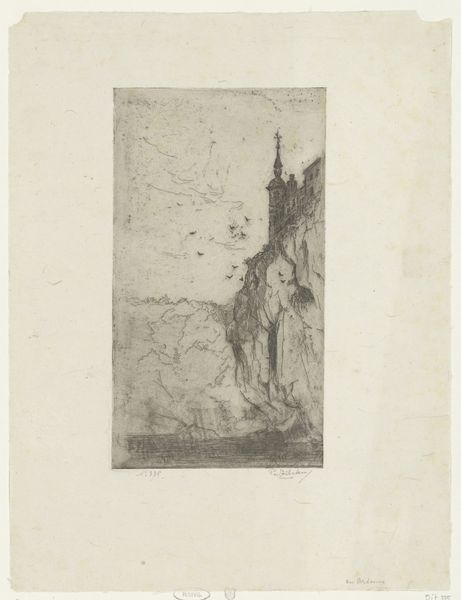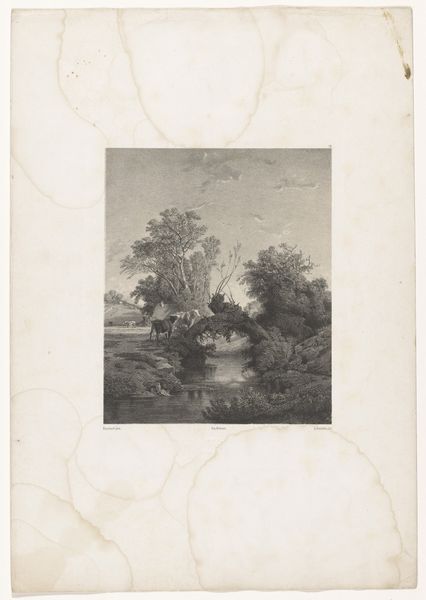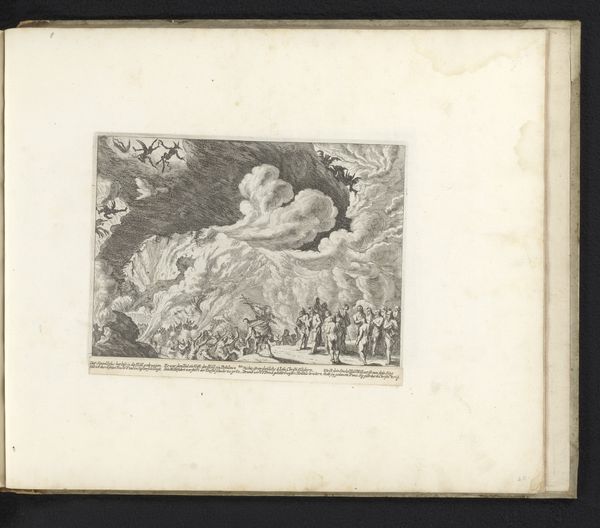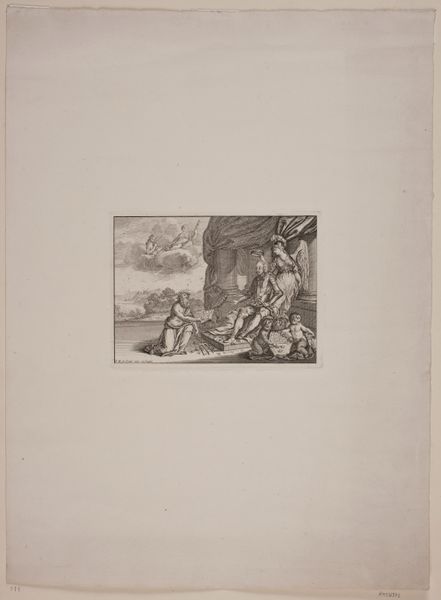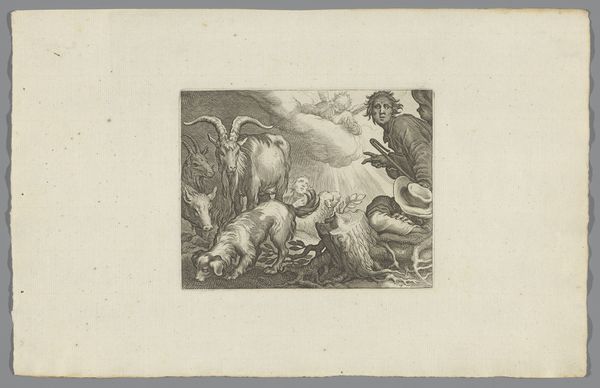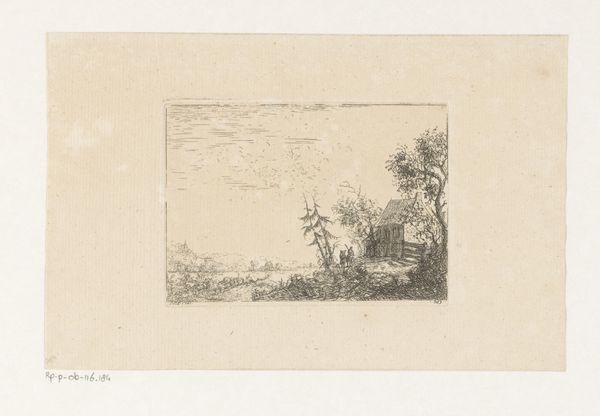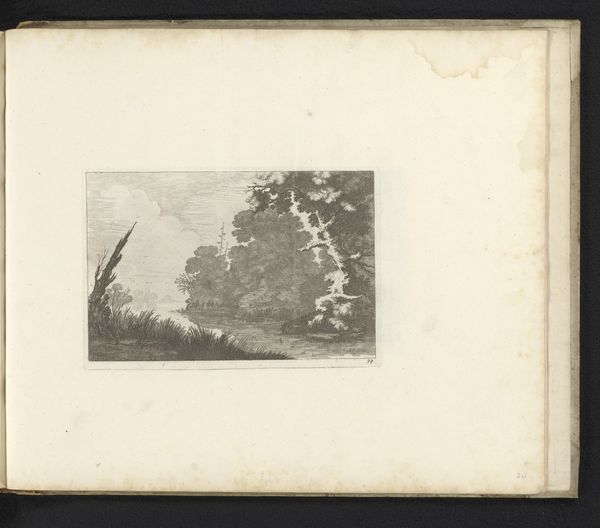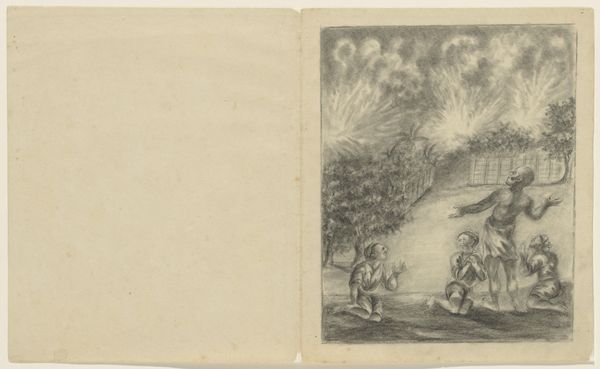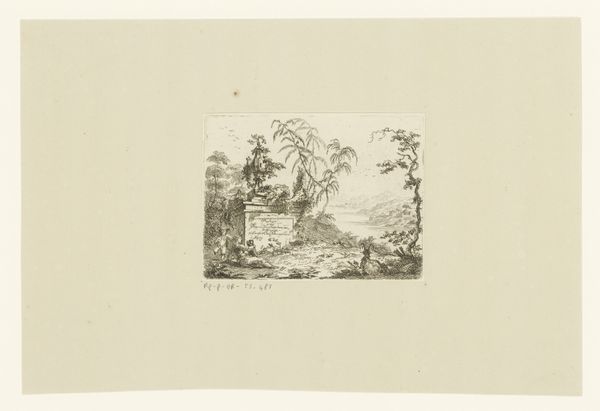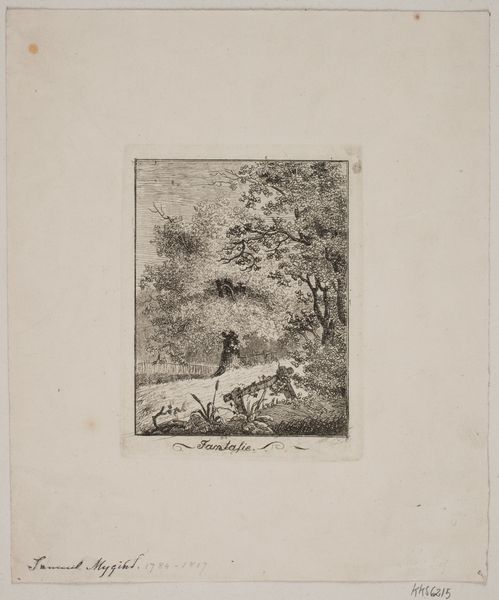
print, engraving
# print
#
landscape
#
figuration
#
romanticism
#
history-painting
#
engraving
Dimensions: 67 mm (height) x 100 mm (width) (plademaal)
Editor: Here we have Frederik Schepelern’s print, "Luther ved et krucifiks på en klippe," placing Luther by a crucifix on a rock, sometime between 1796 and 1883. It feels quite dramatic with the storm on the right side of the image. What do you see in this piece? Curator: Beyond the obvious scene of Luther, what strikes me are the enduring symbols used to portray his narrative. The crucifix, a potent emblem of sacrifice, stands alongside the figure of Luther, while on the other side a dramatic storm rages around a barren tree, presumably alluding to destruction. Why include both of those, do you think? Editor: Maybe the storm symbolizes the upheaval he caused within the Church? And the crucifix for the traditional way, from before the Reformation? Curator: Precisely. Consider, then, how the artist deploys symbols like lightning – often associated with divine retribution, while the barren tree implies spiritual desolation before the blossoming promised by reformation. Notice also that in the heavens are globes each with a symbol or word, likely meant to be understood by the literate population viewing the print. How do these elements work together to create meaning beyond just a historical record? Editor: It makes me think about how images create these easily read associations, things that are understood by almost everyone from a culture that they're a part of, that connect them to a common past and experience. Curator: Indeed. These aren't just representations, but condensations of shared beliefs, struggles, and hopes rendered visually to be passed on. Even the choice of engraving reinforces the idea, making something easily reproducible so that Luther's story becomes interwoven with the culture and historical memory. What do you take away from examining these choices? Editor: It’s fascinating how much symbolism is embedded, creating a shared narrative over time, almost functioning as a visual language that speaks to our cultural memory. Curator: Agreed, it becomes a study in how history is visually constructed and culturally perpetuated.
Comments
No comments
Be the first to comment and join the conversation on the ultimate creative platform.
